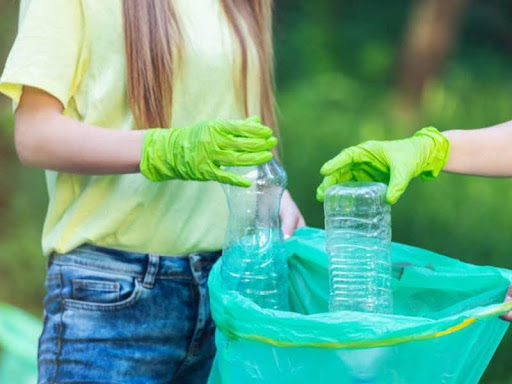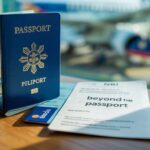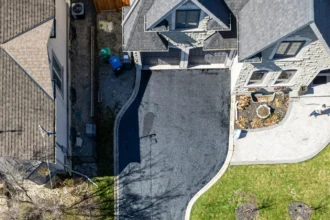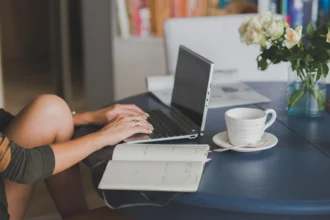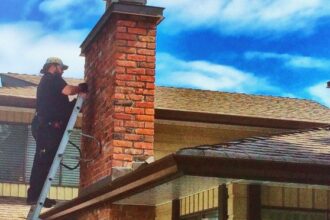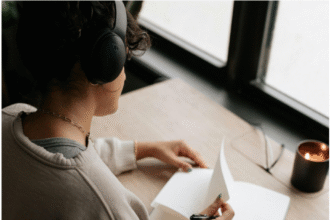You stand in front of the blue bin, a plastic container in your hand, and you pause. Does this go in here? It’s a familiar feeling for many of us who are trying to do the right thing for the environment. These clear and simple recycling tips 2025 will help you recycle with confidence and make your life easier.
Making sure you get it right is more important now than ever before. Contamination, which occurs when the wrong items end up in the recycling bin, is a massive problem for waste management systems. A single contaminated batch can force entire truckloads of good recyclables to be sent straight to the landfill.
This completely defeats the purpose of our collective recycling efforts. Let’s clear up the confusion so you can feel good about what you’re recycling. By learning a few key rules, you can help make our local recycling program more effective for everyone.
Why Your Recycling Efforts Still Matter in 2025
It’s easy to feel like your personal recycling bin doesn’t make a big difference in the grand scheme of things. However, when you consider our entire city’s population, these individual actions compound into a significant positive impact. Every time you recycle correctly, you are actively helping to conserve precious natural resources.
Creating new products from recycled materials consumes far less energy and water than producing them from raw materials. For instance, manufacturing an aluminum can from recycled aluminum uses approximately 95% less energy than making one from scratch. That represents a huge energy saving that is multiplied by millions of cans every year.
Your recycling habits also divert a tremendous amount of material from our landfills, which contributes to a greener future. Landfills occupy valuable land and can release potent greenhouse gases into the atmosphere, which impacts our shared carbon footprint. By redirecting materials to be reused and repurposed, you directly help lower our community’s environmental impact and support global recycling goals.
Our Best Recycling Tips 2025 for Calgary Residents
Getting your recycling right is about building sustainable, positive habits. You do not need to become an expert overnight. Following these pointers will put you on the right path and make a real difference in the effectiveness of our city’s recycling program.
Tip 1: Know What Goes in the Blue Bin
Let’s begin with the fundamentals for your blue cart. In Calgary, the focus of curbside recycling is on clean paper, cardboard, metal food cans, and plastic containers marked with the recycling symbol 1 through 7. This forms the foundation of the residential recycling program.
Accepted paper items include newspapers, flyers, letters, and magazines. For plastics, think of containers like yogurt tubs, milk jugs, and plastic bottles. Metal cans from soup, vegetables, and tuna are also typically accepted; just be sure to give them a quick rinse first.
Knowing what is not allowed is equally critical. Items like plastic bags, food waste, single-use coffee cups, and electronics should never go in your recycling bin. The City of Calgary provides a detailed list online, which is an excellent resource to check local guidelines.
To make it even clearer, here is a simple breakdown:
| Accepted in the Blue Bin | Keep Out of the Blue Bin |
|---|---|
| Newspapers, flyers, and mail | Plastic bags and plastic wrap |
| Cardboard and paperboard (cereal boxes) | Food waste and kitchen scraps |
| Metal food cans (tin, aluminum, steel) | Coffee cups and greasy pizza boxes |
| Plastic bottles, jugs, and tubs | Electronics, batteries, and light bulbs |
| Glass jars and bottles | Styrofoam and bubble wrap |
Tip 2: Get Smart with Your Plastics
The variety of plastics can be puzzling. You have likely seen the small numbers inside the chasing arrows symbol on the bottom of plastic items. While Calgary accepts plastics with numbers 1 through 7, the sorting technology at recycling facilities relies more on the item’s shape.
The city’s automated sorting systems are calibrated to recognize common shapes like jugs, tubs, jars, and bottles. This means that other plastic items, such as plastic toys, cutlery, or styrofoam packaging, cannot be processed through your bin recycling. Even if they have a recycling symbol, they are a common recycling mistake that contaminates the plastic waste stream.
Always crush your plastic bottles and screw the caps back on before tossing them in. This simple action saves a significant amount of space in your bin and in collection trucks. It also prevents the small, loose caps from falling through the cracks in the sorting machinery and being discarded.
Tip 3: When in Doubt, Leave it Out
This might be the single most important rule to remember. Many of us, with the best of intentions, engage in “wish-cycling.” This is the act of tossing something in the blue bin, hoping it can be recycled, even when we are not certain.
Unfortunately, this behavior often does more harm than good. Items like greasy pizza boxes, broken glass, flexible plastic pouches, or textiles can ruin an entire batch of otherwise valuable recyclables. That single contaminated item can cause a whole truckload of material to be rejected at the recycling facilities and sent to the landfill.
If you find yourself standing by the bin feeling uncertain about an item, it is always better to place it in the black garbage bin. While it may feel counterintuitive, this protects the integrity of the entire recycling system. When you have a moment, use the city’s “What Goes Where” online tool to check for next time.
Tip 4: Clean, Empty, and Dry is a Must
This is not merely a polite suggestion; it is a critical rule for successful recycling. Leftover food and liquids are a primary source of contamination. A half-full jar of pasta sauce or a small amount of milk left in a jug can leak onto paper and cardboard, making them impossible to recycle.
You do not need to scrub containers until they are spotless. A quick scrape with a spatula to remove food residue and a simple rinse are generally sufficient to get them clean enough. The main objective is to remove any materials that could spoil or cause problems during the sorting and processing stages.
After you rinse food containers, allow them to air dry before placing them in the bin. Wetness degrades the fibers in paper and cardboard, significantly lowering their quality and value. A little extra effort here goes a long way toward ensuring the materials you set out can actually be recycled.
Tip 5: Always Flatten Your Cardboard
This is a simple step with a huge impact. It is time to make sure you flatten cardboard boxes before placing them in your blue cart, as this saves a tremendous amount of space. It allows you to fit significantly more recyclables in your bin and prevents it from overflowing.
This practice also makes the collection process far more efficient for your local waste management service. When you flatten cardboard, it means fewer trips are needed for collection trucks. This conserves fuel and reduces vehicle emissions, adding another environmental benefit to your good recycling habits.
Before recycling, make sure you remove any shipping materials like plastic wrap, styrofoam inserts, or bubble wrap from inside the cardboard boxes. These materials are not recyclable in the blue bin and must be disposed of separately in the garbage. Only the clean cardboard itself should be recycled.
Tip 6: Handle Electronics and Batteries Separately
Electronics, often referred to as e-waste, should never be placed in your blue or black bins. They contain materials such as lead, mercury, and cadmium that can be hazardous to the environment if they end up in a landfill. However, these materials are also valuable and can be safely recovered when you recycle electronics correctly.
Used batteries are particularly dangerous in recycling facilities. They can easily spark and cause serious fires when they are crushed or damaged by sorting equipment. The growing prevalence of lithium-ion batteries in so many household devices has made the proper disposal of electronic batteries a top safety concern.
The City of Calgary provides several designated drop-off locations to recycle electronics and batteries safely. Additionally, many retail stores, including hardware and electronics shops, offer take-back programs. A quick online search will help you find the most convenient option for the proper disposal of these items.
Tip 7: Use a Local Bottle Depot
Your blue bin is excellent for many items, but it is not the right place for beverage containers that carry a deposit. This includes items like milk jugs, juice boxes, beer cans, and the water bottle you bought at the grocery store. Taking these containers to a bottle depot is a win-win for you and the environment.
First, you receive your deposit money back, which can add up over time. Second, bottle depots are specialized facilities designed to handle these materials efficiently. They collect these containers in a very clean stream, which ensures that nearly 100% of what you bring in gets recycled into new products.
Using a local depot, such as Fish Creek Bottle Depot in Calgary, makes this process simple. By choosing to separate recycling streams, you help both the city’s blue bin program and the container deposit system operate more effectively. This is a great example of smart local waste management.
Common Recycling Mistakes in Calgary (And How to Fix Them)
We have all made recycling mistakes, but learning from them is what truly counts. Many of us make the same common errors without realizing the negative consequences. Understanding these frequent slip-ups can help you become a more effective recycler.
Here are some of the most common mistakes and how you can easily avoid them.
- Bagging Your Recyclables. Placing your recyclables inside a plastic bag is one of the biggest errors. The sorting machines at the facility cannot open these bags, so the entire bag of bagged recyclables, including all the good materials inside, gets redirected to the landfill. Always put your items into the blue bin loose and unbagged.
- Forgetting About Lids and Caps. For plastic bottles and containers, empty them completely and then screw the lid back on before recycling. For metal cans, you can simply drop the clean lid inside the can. This prevents these small plastic items from getting lost in the machinery.
- Tossing in Takeout Coffee Cups. Those disposable coffee cups might look like paper, but they are a composite material. They contain a thin plastic lining to prevent them from becoming soggy, which makes the coffee cup itself unrecyclable in Calgary’s program. The black plastic lid and the cardboard sleeve, however, can often be recycled separately.
- Recycling Greasy Pizza Boxes. Oil and grease from a greasy pizza are major contaminants for paper products, as they cannot be separated from the paper fibers. If the top half of your pizza box is clean and free of grease, you can tear it off and recycle that part. The greasy bottom half must go into the black bin or compost.
- Ignoring Packaging Waste. Many products come with excess packaging waste, like flexible pouches or wrappers, that are not recyclable. This includes chip bags, granola bar wrappers, and plastic film. Check local guidelines, as some grocery store locations offer drop-off locations for soft plastics and shopping bags.
Being mindful of these few things will dramatically improve the quality of what you put in your blue cart. It’s great when you’re recycling correctly because it is a team effort. Your contribution is essential to the success of our shared goals.
Beyond the Blue Bin: Advancing Your Waste Reduction Efforts
Mastering your recycling bin is a fantastic step, but it’s only one part of living a more sustainable life. To truly minimize waste, we can look at other habits that complement our recycling efforts. Embracing a zero-waste lifestyle is a journey of making conscious choices every day.
One of the most impactful changes is to reduce plastic consumption at the source. This can be as simple as carrying a reusable water bottle instead of buying single-use plastic bottles. Bringing your own shopping bags to the grocery store also makes a big difference in cutting down on plastic bag waste.
Composting is another powerful tool for waste reduction. Many kitchen scraps and food scraps that cannot be recycled, like vegetable peels and coffee grounds, can be turned into nutrient-rich soil. This diverts a significant amount of organic waste from landfills, where it would otherwise produce methane gas.
Finally, consider the full lifecycle of the products you buy. Before throwing something away, ask if you can donate items that are still in good condition. Giving clothes, furniture, and other household goods a second life is a wonderful way to reduce waste and support your community.
Conclusion
Recycling can sometimes feel like a puzzle, but it’s one we can definitely solve together. By focusing on the basics and building good recycling habits, you can make a real, positive impact on our city and our environment. It all starts with remembering to clean your containers, flatten your boxes, and keep tricky items out of the recycling bin.
Every small action contributes to a larger movement for a healthier planet. Using these recycling tips in 2025 will help you participate more effectively and with greater confidence in our collective waste reduction journey. Together, our efforts pave the way for a cleaner and greener future for all. All rights reserved.


